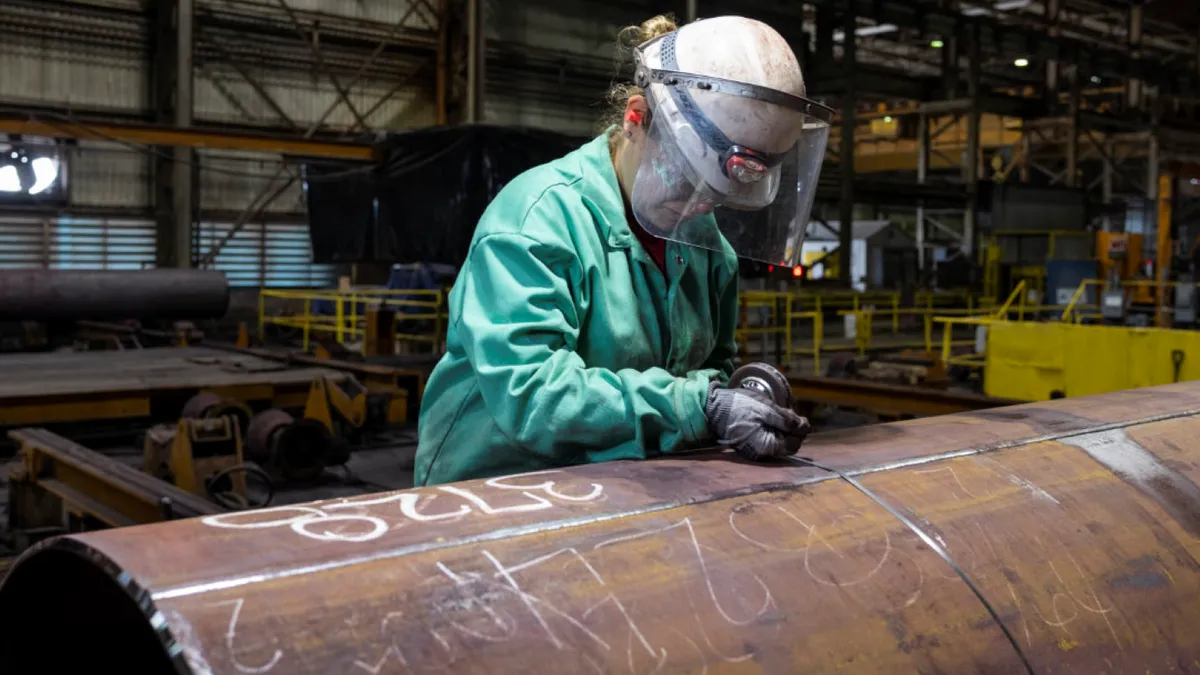Dive Brief:
- The producer price index for final demand, a measure of what suppliers charge, rose 2.2% in the 12 months through July, an improvement from the 2.7% pace in June that bolstered optimism the Federal Reserve will trim borrowing costs next month by as much as a half percentage point.
- Core PPI, which excludes volatile food and energy prices, was unchanged last month compared with June for the lowest result in four months, the Labor Department said Tuesday. Over a 12-month period, core PPI increased 2.4%.
- “This is a good reading ahead of tomorrow’s CPI [consumer price index data] and provided additional cover for the Fed to cut rate 25 bps [0.25 percentage point] in September,” Scott Helfstein, head of investment strategy at Global X, said in an email.
Dive Insight:
The less-than-forecast gain in PPI last month bodes well for a decline in economy-wide price pressures in coming months, Helfstein said.
“Producer prices have been leading the way this inflation cycle,” he said. “They moved higher ahead of consumer prices, and they also led the way down.”
Traders in interest rate futures on Tuesday increased to 55% the odds that policymakers will reduce the federal funds rate by a half point at their Sept. 17-18 policy meeting, according to the CME FedWatch Tool.
On Monday, traders saw 50% probability of such a reduction. Since July 2023 the central bank, seeking to curb inflation to its 2% target, has held the benchmark interest rate at a 23-year high ranging from 5.25% to 5.5%.
Although Fed Chair Jerome Powell this month signaled the start of easing in September, some central bankers may not yet be on board with a policy switch, even after a decline in price pressures in recent months.
“The progress in lowering inflation during May and June is a welcome development, but inflation is still uncomfortably above the [Federal Open Market] Committee's 2% goal,” Fed Governor Michelle Bowman said Saturday in a speech.
“And despite the recent good data reports, core PCE [personal consumption expenditures] inflation averaged an annualized 3.4% over the first half of the year,” she said.
“Given that supply constraints have now largely normalized, I am not confident that inflation will decline in the same way as in the second half of last year,” Bowman said. “More importantly, prices continue to be much higher than before the pandemic, which continues to weigh on consumer sentiment.”
Much of the improvement in producer prices gains stemmed from a 1.3% decline in final demand trade services, or the change in margins received by wholesalers and retailers. In June, the trade services figure rose 1.4%.
Despite the Fed’s progress in meeting its 2% goal, inflation persists as the No. 1 challenge for small businesses, the National Federation of Independent Business said Tuesday, describing the results of a monthly survey.
“Cost pressures, especially labor costs, continue to plague small business operations, impacting their bottom line,” NFIB Chief Economist Bill Dunkelberg said in a statement.
An NFIB index of small business optimism rose last month to the highest level since February 2022 but remained below the 50-year average for the thirty-first consecutive month, the federation said.
“Despite the increase in optimism, the road ahead remains tough for the nation’s small business,” Dunkelberg said.















